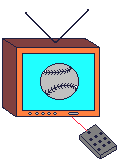Report Writing
Prewriting:
When beginning to write reports I usually do a brainstorm activity with the children to find out what type of reports they would like to write about. These ideas I put on my IWB as this enables me to save a copy of results & refer to it later when needed.
It is useful to let children come up with a selection on which they want to report on e.g. soccer match, rugby match, or whatever is topical at the time. It is also useful to have a timetable of upcoming matches so that children will be expecting them & also expecting to report on them. Dont worry, there will always be someone in the room who will have this information to hand!
When the children have decided, we make notes about the match & put the ideas in order.
We then compile some interesting facts about the match e.g. teams taking part, where they’re from, captains, referee, standing in the League tables, top scorers etc. Again I save these to IWB for future reference.
We then look at reports from newspapers & magazines & discuss these noting content, layout, language, quotations, photographic evidence etc.
Drafting:
The children then work in groups of 2 or 3 & I give them a template on which to plan their report. This page is usually in the form of a storyboard. These templates are found on the Resources page. The children collaboratively plan the report including the necessary information about the match. They then write their own report on a sheet using ideas already discussed.
Responding & Revising:
Children read the writing to themselves & to each other / partners. This is the stage where they collaborate to revise / edit / improve their report.
Proofreading:
Children read the writing again. They check to see that capitalization, punctuation & grammar are used correctly. It can be helpful to use the ‘Editing checklist’ provided in the Resources section.
Publishing:
When children are happy with their writing they share it with the class & publish their piece either by printing on computer, podcast or by reading to the class.

